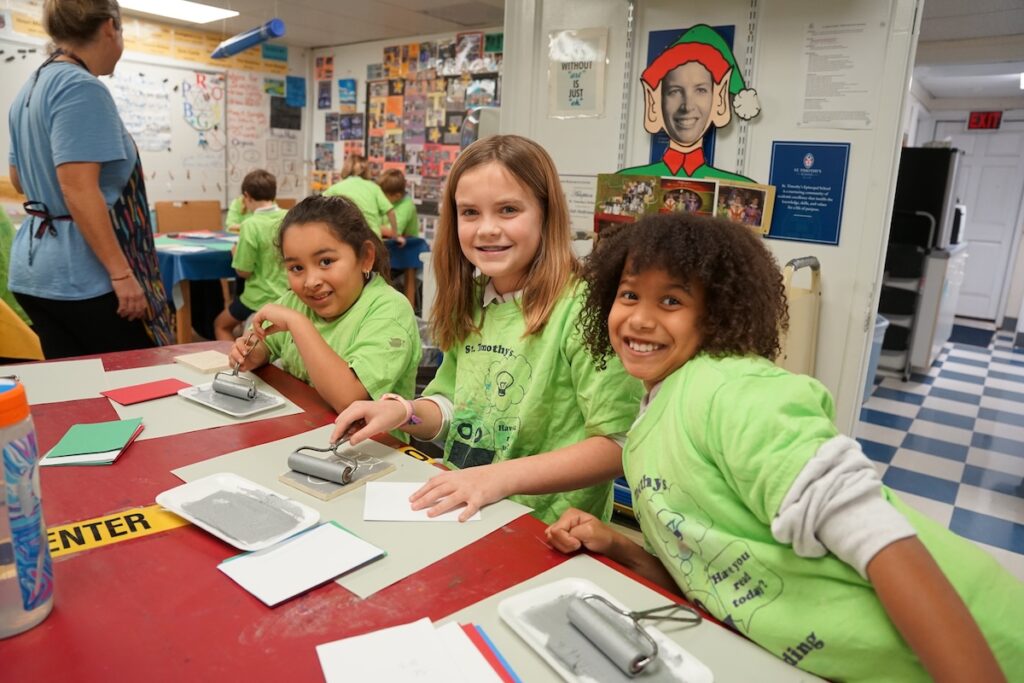It’s important to remember that school isn’t just about math, science, history, and other traditional scholastic subjects. In addition to these core academic areas, visual and performing arts are crucial in a child’s early education. These creative, exploratory learning opportunities enrich students’ learning experiences and aid their intellectual and social-emotional development.
At St. Timothy’s School, we pride ourselves on our comprehensive arts curriculum. Through visual art, drama, music and chorus, and band, our students share their creative talents with our community and develop critical intellectual, emotional, and social skills. Read below for why art education is vital to a child’s education and learning experience.
Encourages Social-Emotional Learning
Participating in creative and performing arts programs strengthens a child’s social-emotional skill set. Whether practicing with peers for the school play or in a band ensemble, students enjoy ample opportunities to collaborate and communicate through art education.
As a result, children benefit from a deeper understanding of tackling important developmental tasks, including getting along with others, working through differences, empathy, teamwork, and cooperation. They can then use these skills to thrive in other academic areas, making them a more confident, self-esteemed student capable of asserting themselves in different settings and situations. For example, students might feel more comfortable standing and speaking in front of their peers and teachers when instilled with confidence from their creative experiences.
Enriches the School Experience
Finding new forms of self-expression is significant for children, and comprehensive arts education provides just that. While students gain so much through traditional academia, creative and performing arts make a child’s school experience even more whole and enriched. By immersing themselves in artistic endeavors like school drama productions or visual art classes, children can learn more about themselves and their passions, experiencing additional growth on top of their academic pursuits.
Teaches students how to receive feedback
Learning to receive constructive feedback is vital for a student’s learning experience. While traditional academic subjects like mathematics offer less room for feedback, given that most questions have one specific answer, art classes provide a different experience. Receiving comments on their artwork or performances helps students become more comfortable with handling constructive criticism and allows them to grow not only as an artist but also as a person.
Develops Leadership Skills
Visual and performing arts opportunities give students a new level of autonomy. When making executive decisions in artistic pursuits, such as deciding how they approach a scene in a play or going in a specific direction for an art project, students become stronger decision-makers and, consequently, more assertive leaders. This ability to make decisions for themselves translates to other academic areas and aspects of life, encouraging them to act as stronger leaders inside and outside the classroom.
Private Education at St. Timothy’s School
At St. Timothy’s School, we incorporate visual and performing arts in our curriculum to enrich students’ learning experiences. With opportunities to participate in drama, music and chorus, band, and visual arts, our students get the chance to creatively express themselves through different outlets. Visit our site today to learn more about art education at St. Timothy’s.


